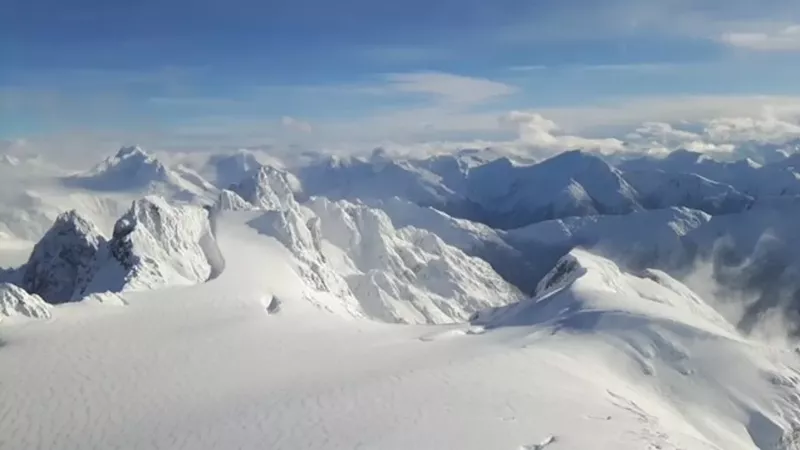
New technology allows researchers to understand the effects wildfires have on the snowpack
PRINCE GEORGE—Researchers from the University of Northern British Columbia (UNBC), Vancouver Island University (VIU), and Hakai Institute have been investigating innovative ways to measure snowpacks and glaciers across the province. The new measurement tool allows scientists to better understand how wildfires influence the melting of the glaciers, and develop their knowledge as to the role seasonal snow cover and glaciers play in the hydrology of key watersheds along B.C.’s Central and Southern Coast.
The project, called the Hakai Cryosphere Node, is located at UNBC. Geography Professor Dr. Brian Menounos is co-leading the Node in partnership with Dr. Bill Floyd, a Research Hydrologist with the BC Ministry of Forests and a VIU Geography Adjunct Professor.
“We had some fundamental questions about how important seasonal snow is in the total water budget. How important are glaciers in terms of runoff or headwater streams? And how these natural resources, these frozen reservoirs, are changing through time and can we come up with better ways to estimate the total volume or what is often referred to as the total mass of water contained within the seasonal snow and glaciers themselves,” said Menounos.
Using a plane equipped with LiDAR (a sensor that uses a pulsating laser to measure ranges, or variable distances, to the Earth), researchers can fly over the watershed area and get two sets of measurements. One of those measurements is when their is no snow, and the other is with snow on the ground. By using the two measurements the researchers can create a detailed 3-D model of the earth’s surface allowing for a better estimate of snow depth.
